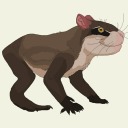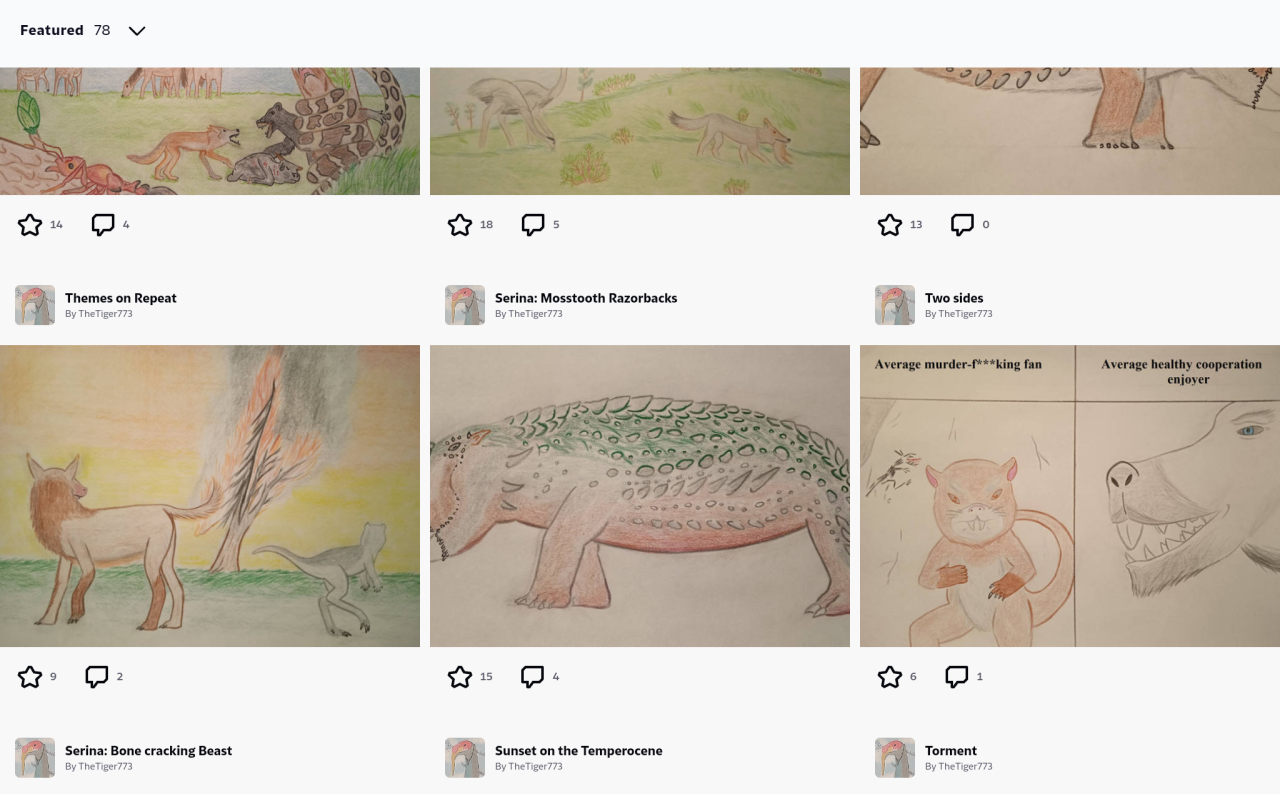I don’t have a Deviantart (mostly because I don’t think I’d be able to keep up with having two social medias with recent busy-ness) but I look around there on browser sometimes and I stumbled upon some Hamster’s Paradise fanart! Especially from some guy who goes by TheTiger773 who does really great spec evo art and also covers quite a bit on the eras in the original draft sketches that I haven’t even gotten to yet. Still, it’s fun to see how my work inspires ideas from others too, and if anyone has a DA let them know I gave them a shout-out. :D
(POTENTIAL MAJOR SPOILERS DOWN BELOW)
They’ve also done some art of the Terminocene, the final stage that I won’t be able to get to for a long, long time. Nonetheless nice to see someone else’s interpretation of the loose draft.
A fun take on one of the more iconic parts of the Terminocene, so I felt I ought to try drawing a concept. (Note: none of the below is canon, and is greatly subject to change in the future. I just had some fun revisiting old ideas.)
’The Early Terminocene, 500+ million years post-establishment. The world has reached its end times, yet life carries on one final push even as the planet becomes increasingly uninhabitable. Strange creatures roam this nigh-alien landscape. There are no more trees, yet there are forests: forests of giant grasses, springing up from immense underground rhizomes, while photosynthetic lichens now take the place of ground cover, providing an abundance of food for the last great creatures that will ever roam the planet.
A mighty gorillaphant stares down a subadult gorizard, intimidating the cautious predator into leaving its territory. Below scampers a surface daggoth, fleeing the scene to safety, dodging past large, oozing amoeboid masses: motile, carnivorous shroomors. Above, a flock of tribeaks are roused into a fluttering flight. Strange, yet familiar, these creatures are products of the survivors of numerous mass extinctions that have happened in the meantime. Thus their heritage is unexpected: the gorillaphant is a descendant of a group of furbils that dominated after a catastrophic extinction event, and the gorizard a from a clade of bipedal rattiles born of the descendants of the shingles. Older clades have morphed beyond recognition: the tribeaks are extremely derived pterodents, each finger with its own plume-shaped membrane, and keratinous sheaths on its split upper lip and lower jaw that form a dexterous three-part “beak”: one that gave it the dietary flexibility to withstand catastrophic changes. Surface daggoths, developing light-sensitive organs akin to stalk eyes on their facial tendrils, have now become quite common filling a wide array of small to medium generalist niches. Even the shroomors, least recognizable of all animals, have begun to return into a form that once again is more fauna than flora. Even at the end, when all seems lost, life finds a way: enduring for as long as it can, and adapting into an array of extreme new forms in the face of complete destruction.’
————








